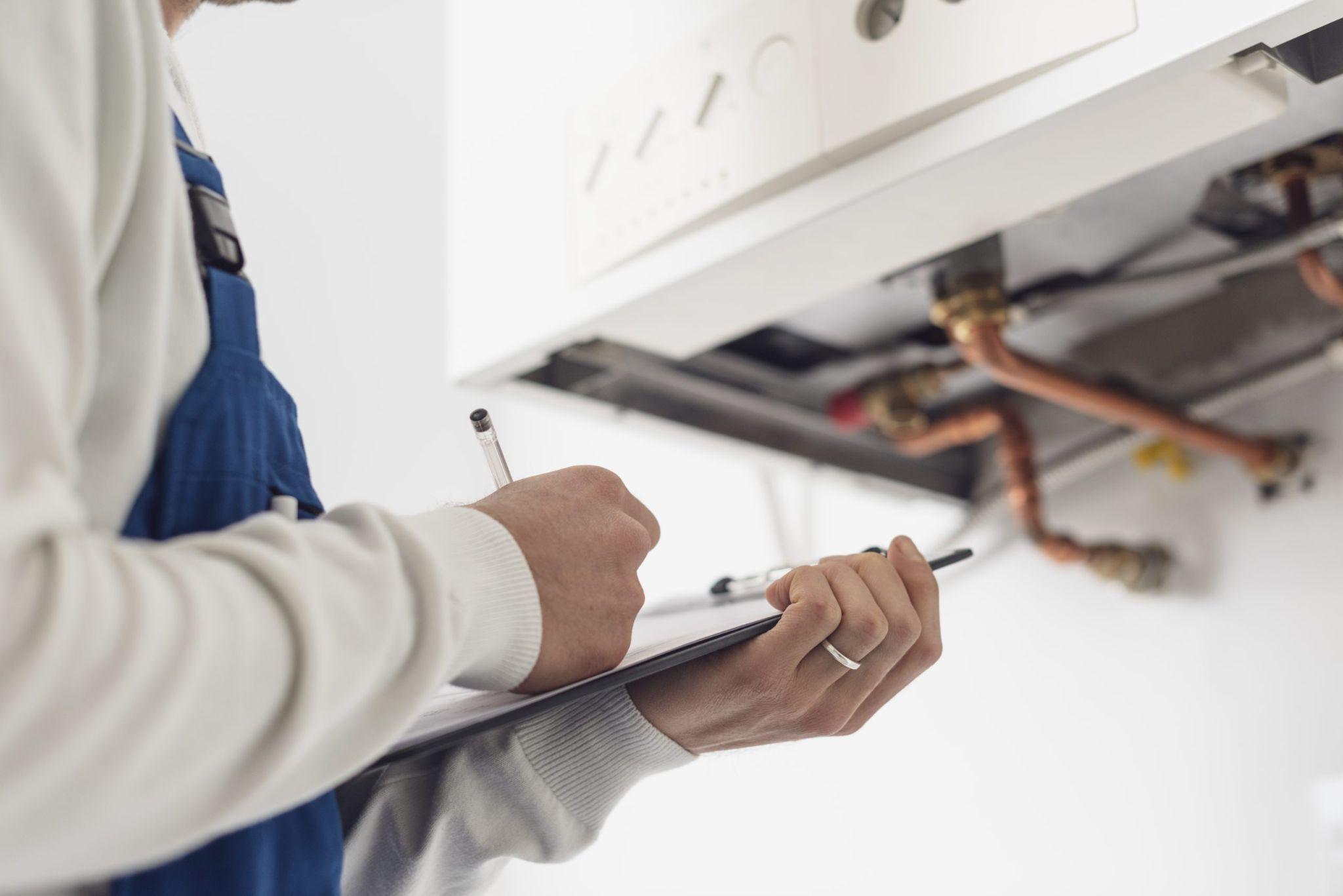Learning
How To Update Router Firmware: Enhancing Your Network’s Performance

How To Update Router Firmware: Is your internet connection sluggish and unreliable? Are you concerned about the security of your network? If so, it might be time to update router firmware.
Firmware is the software embedded in your router that controls its functionality and performance. Just like any other software, router firmware receives updates that improve its features, fix bugs, and enhance security.
By keeping your router firmware up to date, you can enjoy faster and more reliable internet speeds while protecting your network from potential vulnerabilities.
In this comprehensive guide, we’ll walk you through updating your router firmware step by step.
We’ll cover everything from understanding the benefits of firmware updates to providing you with detailed instructions for various router models. So, let’s dive in and learn how to update router firmware effectively.
Understanding the Importance of Router Firmware Updates

Router firmware updates are not to be overlooked, as they offer numerous benefits that can significantly improve your network’s performance and security.
Here are a few reasons why keeping your router firmware up to date is crucial:
- Enhanced Security: Firmware updates often address vulnerabilities and protect your network from threats. Regular updates ensure that your router’s security features are up to date, guarding against unauthorized access and potential data breaches.
- Bug Fixes and Stability: Firmware updates address software bugs and stability issues that may impact your router’s performance. By installing the latest firmware, you can resolve glitches, crashes, and other operational problems, ensuring a smoother internet experience.
- Improved Features: Firmware updates often introduce new features and functionality to your router, providing you with additional options to optimize your network. These updates can include improved parental controls, advanced QoS settings, and compatibility with emerging technologies.
- Optimized Performance: Outdated firmware may limit your router’s performance potential. Updates optimize network performance, ensuring faster internet speeds, reduced latency, and improved overall reliability.
Now that we understand the importance of router firmware updates, let’s explore the step-by-step process of updating your router firmware.
How to Update Router Firmware
Before diving into the firmware update process, it’s essential to note that router models may vary in terms of their specific procedures.
Therefore, it’s crucial to consult your router’s user manual or the manufacturer’s website for accurate instructions tailored to your device. However, the following general steps will guide you through the process:
1. Checking Your Router’s Current Firmware Version

To start, you need to determine the current firmware version of your router. This information will help you identify if an update is available and ensure that you’re installing the correct firmware for your device.
Here’s how you can check your router’s current firmware version:
- Connect your computer or mobile device to your router’s network.
- Open a web browser and enter your router’s IP address in the address bar. Common router IP addresses include “192.168.1.1” or “192.168.0.1”. If you’re unsure of your router’s IP address, consult the user manual or the manufacturer’s website.
- You will be prompted to enter your router’s login credentials. Enter the username and password, which are often “admin” for both fields unless you’ve changed them.
- Once logged in, navigate to the router’s settings or administration page. The location of this page may vary depending on your router model.
- Look for the firmware or software version information. It is typically displayed on the main page or under a “System” or “Router Status” section.

By noting down the current firmware version, you can proceed to the next step of researching firmware updates for your specific router model.

2. Researching Firmware Updates for Your Router Model
Now that you know your router’s current firmware version, it’s time to research if any updates are available. To ensure a successful firmware update, follow these steps:
- Visit the manufacturer’s official website. Look for a support or downloads section.
- Enter your router model number or select your specific router model from the list provided.
- Locate the firmware section or search for available firmware updates for your model.
- Check if there are any firmware updates that correspond to a newer version than your current one.
- Read the release notes or description of each firmware update to understand the improvements or bug fixes it offers.
- Ensure that the firmware update is compatible with your router model and version.
Once you’ve identified the appropriate firmware update, it’s time to prepare your router for the update process.
3. Backing Up Your Router Settings
Before proceeding with the firmware update, it’s advisable to back up your router’s current settings.
This precautionary measure ensures that you can restore your router’s configuration if any issues arise during the update. Follow these steps to back up your router settings:
- Access your router’s web interface using the steps mentioned earlier.
- Look for a “Backup” or “Administration” section within the settings.
- Find an option to save or export the current router configuration.
- Choose a location on your computer or device to save the backup file and click “Save” or “Export”.
With your router settings backed up, you can confidently move forward with the firmware update process.
4. Downloading the Firmware Update File
Once you’ve identified the appropriate firmware update for your router model, it’s time to download the update file. Follow these steps to download the firmware update:
- On the manufacturer’s website, locate the download link for the firmware update that corresponds to your router model and version.
- Click on the download link, and the firmware update file will start downloading to your computer or device.
- Ensure that you save the file in a location where you can easily access it later.
Remember to download the firmware update file from the official manufacturer’s website to ensure its authenticity and avoid potential security risks.
5. Accessing the Router’s Web Interface
With the firmware update file downloaded and ready, it’s time to re access your router’s web interface to initiate the update process. Follow these steps:
- Connect your computer or mobile device to your router’s network.
- Open a web browser and enter your router’s IP address in the address bar, just as you did when checking the current firmware version.
- Enter your router’s login credentials to access the settings.
- Navigate to the firmware or update section of the router’s settings. This section may be labeled differently depending on your router model.
- Look for an option to browse or select the firmware update file you downloaded in the previous step. Click on the “Browse” or “Choose File” button.
- Locate the firmware update file on your computer or device and select it.
- Start the firmware update process by clicking on the “Update” or “Upgrade” button.
Note: During the firmware update process, it’s crucial not to interrupt the power supply to your router or close the web browser. Doing so can lead to a failed firmware update and potential issues with your router.
6. Uploading and Installing the Firmware Update
Once you’ve initiated the firmware update process, your router will begin uploading and installing the new firmware. This process may take a few minutes, and you may experience a temporary loss of internet connectivity.
Follow these steps to complete the update:
- Allow the firmware update process to proceed uninterrupted. Avoid restarting your router or disconnecting it from the power source.
- Your router will display a progress bar or indicator to show the status of the update. Wait patiently until the update is complete.
- Once the update is finished, your router may automatically reboot. If not, you can manually restart it to ensure the new firmware is fully applied.
It’s essential to avoid interfering with the router or interrupting the update process to ensure a successful firmware installation.
7. Verifying the Firmware Update
After the router has rebooted and the new firmware is installed, it’s time to verify if the update was successful. Follow these steps to confirm the firmware update:
- Access your router’s web interface again using the steps outlined earlier.
- Login with your credentials to enter the settings.
- Navigate to the firmware or router status section to locate the firmware information.
- Verify that the firmware version displayed matches the updated version you downloaded and installed.
If the firmware version matches the updated version, congratulations! You have successfully updated your router firmware and can now enjoy the benefits of the latest features, bug fixes, and improved security.
Conclusion
Updating your router firmware is crucial to optimizing your network’s performance, enhancing security, and enjoying the latest features.
By following the step-by-step process outlined in this guide, you can confidently update your router firmware and experience improved internet speeds, stability, security, and functionality.
Consider your router’s user manual or the manufacturer’s website for specific instructions tailored to your device.
Regularly updating your router firmware should be part of your network maintenance routine. It ensures that you benefit from the latest advancements in technology, bug fixes, and security patches.
Keeping your router firmware up to date allows you to enjoy a faster and more reliable internet connection while safeguarding your network from potential threats.
So, take the time to check your router’s current firmware version, research for available updates, back up your router settings, download the firmware update file, access your router’s web interface, upload and install the firmware update, and verify the successful installation.
Following these steps will ensure you can easily navigate the process and reap the benefits of an updated router firmware.
RELATED CTN NEWS:
How To Hack WiFi Password: Unlocking The Secrets Of Wireless Networks
Instagram Bio Ideas: Unlocking Creativity And Captivating Audiences
8 Best AI Music Generators In 2023: How Do They Work & Benefits?

Learning
First-Time Buyer’s Guide to the UK Property Market

Entering the UK property market as a first-time buyer can feel both exciting and daunting. The process is filled with potential pitfalls and complex decisions, but with the right guidance, it can be navigated smoothly. The estate agents in Yorkshire demystify the journey from the initial decision to buy a home to the moment you step over the threshold of your new property.
Understanding Your Financial Position
The first and perhaps most crucial step in the home-buying process is understanding your financial situation. This includes assessing your savings, income, and current debts. Here’s how you can prepare:
1. Deposit: Generally, you’ll need at least 5% of the property price as a deposit, though aiming for 10% or more can provide better mortgage rates.
2. Income and Expenses: Use a budget planner to assess your monthly income against your expenses. This will help you understand how much you can afford in monthly mortgage repayments.
3. Credit Score: Lenders will evaluate your credit score to determine your mortgage eligibility. So it’s important to have a good credit score, and you should work on it if required.
4. Mortgage Options: Speak to a mortgage advisor to understand different types of mortgages, such as fixed-rate, variable-rate, and help-to-buy schemes.
Getting a Mortgage Agreement in Principle
A Mortgage Agreement in Principle (AIP) is a statement from a lender indicating how much they’ll likely lend you. You will be a more attractive buyer with an AIP as it shows sellers you’re serious and financially prepared.
Deciding What You Want
Before you start viewing properties, it’s essential to know what you’re looking for. Consider the following factors:
1. Location: Proximity to work, schools, public transport, and amenities are key. Research neighbourhoods to find the best fit for your lifestyle.
2. Property Type: Decide whether you want a flat, terraced house, semi-detached, or detached property. Each has its pros and cons.
3. Must-Haves: Make a list of non-negotiables, such as the number of bedrooms, garden size, and parking facilities.
4. Future Proofing: Consider your future needs. Are you planning to start a family? Do you need space for a home office?
Starting the Property Search
With a clear idea of what you’re looking for, you can begin your property search. Here are some tips:
1. Use Online Portals: Websites like Rightmove, Zoopla, and OnTheMarket are excellent starting points. Set up alerts to get notified of new listings that meet your criteria.
2. Visit Estate Agents: Register with local estate agents who can provide insights into the market and inform you of new properties before they’re listed online.
3. Attend Viewings: Don’t rush this part. Visit several properties to get a feel for what’s available in your price range.
Making an Offer
Once you find a property you love, it’s time to make an offer. Here’s how to approach it:
1. Research: Check the selling prices of similar properties in the area to gauge a fair offer.
2. Negotiate: Don’t be afraid to negotiate. The starting point is most usually the asking price.
3. Conditions: You might include conditions in your offer, such as the inclusion of certain fixtures or a specific moving date.
The Legal Process
If your offer is accepted, the legal process begins. You’ll need a solicitor or licensed conveyancer to handle the legalities. Here’s what to expect:
1. Conveyancing: This is the legal transfer of property ownership. Your solicitor will handle this, including conducting searches, dealing with the Land Registry, and transferring the funds.
2. Surveys and Inspections: Arrange for a property survey to check for structural issues. There are different types of surveys, from basic condition reports to full structural surveys.
3. Mortgage Finalisation: Once the survey is complete and satisfactory, your mortgage can be finalised.
4. Exchange of Contracts: This is when the sale becomes legally binding. You’ll pay your deposit at this stage.
5. Completion: On the agreed completion date, the remaining money is transferred, and you receive the keys to your new home.
Moving In
Moving day can be hectic, but planning can ease the stress:
1. Hire a Removal Company: Book a reliable removal company well in advance. Discover the best deals by getting quotes from multiple companies.
2. Pack Strategically: Label your boxes by room and keep essential items accessible.
3. Notify Utilities and Change Address: Inform your utility providers of your move date and update your address with banks, the DVLA, and other important institutions.
Settling In
Get settled. Introduce yourself to the neighbours, familiarise yourself with the local area, and really start to make the place your own.
Here are a few final tips:
1. Safety Checks: Make sure that your smoke alarms and carbon monoxide detectors are working, and make sure that you know where the gas and electricity meters are located.
2. Maintenance Plan: Keep a record of the smooth functioning of your new home with a maintenance schedule, complete with regular checks and seasonal tasks.
3. Personal Touches: Add personal touches to make the space feel like home. This can be from putting up family photos or redoing the decoration in your rooms.
Conclusion
Buying your very first home in the UK is most definitely a milestone, difficult and full of challenges but rewarding in the end. Such a philosophy guides you in understanding finances and knowing what you want to achieve from detailed research, and seeking professional advice that confidently helps you navigate the property market. Yes, the journey may have its hurdles, but in the end—owning your own home—the reward will be worth the effort. Welcome to your new chapter!
SEE ALSO: Conquer the Chaos: Hacks to Clean Your Home in Half the Time
Learning
5 Health Benefits of Regular Pedicures

There’s nothing quite like a pedicure to keep your feet looking and feeling their best, but did you know that pedicures do more than simply enhance the appearance of your feet? Many people don’t realize that regular pedicures can come with a wide range of health benefits that can promote the well-being of your feet, so here are some ways that your routine pedicure keeps both your toenails and feet in the best condition possible!
Smoother Skin
One of the biggest misconceptions about pedicures is that they only cater to and look after your toenails. While you’ll definitely be leaving each session with a fresh coat of nail polish, your pedicure can also do wonders for the health of your skin. Aside from trimming and shaping your nails and cuticles, you’ll notice that your nail technician also dedicates a few steps to the skin of your feet.
After inspecting your feet and looking for any issues or imperfections that may need to be addressed, your technician will work on an exfoliating scrub to remove any dead skin cells. This step may also be aided by a foot file, which can be used to buff away any calluses and other problem areas manually.
Softer Skin
After your nail technician addresses all the problem areas of your feet and removes any unwanted dead skin cells, he or she will often massage in a moisturizing product, such as lotion, cream, or butter, to ensure that your skin is properly moisturized. These products contain skin-loving ingredients that will ensure that your feet have everything they need to look and feel their best so that you can walk out of your pedicure with a renewed sense of confidence.
Healthier Nails
After your pedicure session, your nails will not only look better due to the fresh coat of nail polish, but they’ll also be healthier and stronger. This is because your nail technician takes their time to ensure that your nails are properly looked after through steps that include deep cleaning, nail trimming, nail filing, and cuticle care. All of these things work together to prevent issues like ingrown nails from occurring, all the while improving the appearance of your nails.
Increased Blood Circulation
While the specific steps included in your pedicure will depend on the beauty salon, most pedicures will have a massage step somewhere in the mix. One of the often overlooked benefits of these massages is the increased blood circulation, which can deliver more nutrients and oxygen to your feet and nails, promoting their health and appearance. Aside from that, better blood flow means reduced tension and soreness, as well as better distributed heat throughout your body.
Reduced Infections
A significant amount of dirt and bacteria can build up on your feet without you even realizing it, but pedicures can be a great way to prevent these from happening in the first place. The exfoliation step of a pedicure removes dead skin cells as well as all the debris that may have accumulated underneath, and the deep cleaning of your toenails and cuticles also gets rid of any impurities that may have slipped beneath them, which can stop infections from happening.
These are some of the many health benefits that you can look forward to at your next pedicure appointment. However, it’s worth noting that you need to book regular sessions to truly reap all the rewards. This can be difficult, especially when you don’t feel like driving to your nearest nail salon after a long day, but the good news is that you can enjoy the salon experience in the comfort of your own home with a home pedicure service.
Learning
Commercial Boiler Installation Services London

For businesses in the bustling city of London, having a reliable heating system is crucial. Whether you’re opening a new office, expanding your current premises, or simply upgrading an outdated system, commercial boiler installation services for businesses in London are essential to ensure your operations run smoothly and efficiently. Proper installation and maintenance of commercial boilers can make a significant difference in energy efficiency, cost savings, and the overall comfort of your workspace.
The Importance of Professional Installation
When it comes to installing a commercial boiler, professional expertise is paramount. Here’s why:
- Efficiency and Performance: Professional installation ensures that your boiler operates at peak efficiency, reducing energy consumption and lowering utility bills. A well-installed boiler can effectively meet the heating demands of your business without unnecessary energy waste.
- Safety: Commercial boilers are complex systems that require precise installation to operate safely. Professional installers adhere to stringent safety standards and regulations, minimizing the risk of accidents and ensuring the safety of your employees and premises.
- Compliance with Regulations: Commercial properties are subject to various building codes and regulations. Professional installers are well-versed in these requirements and ensure that your boiler system complies with all local laws and standards.
- Longevity and Reliability: Proper installation is critical to the longevity and reliability of your boiler. A professional installation can prevent common issues such as leaks, pressure problems, and system failures, ensuring that your boiler runs smoothly for years to come.
Key Considerations for Commercial Boiler Installation
When planning for a commercial boiler installation, several factors need to be considered:
- Type of Boiler: The type of boiler you choose will depend on your business’s specific needs. Options include gas boilers, oil boilers, and electric boilers, each with its own set of advantages. Consulting with a professional can help you determine the best choice for your business.
- Sizing and Capacity: The boiler’s size and capacity must match the heating demands of your commercial space. An undersized boiler will struggle to meet your needs, while an oversized one will lead to inefficiencies and higher costs.
- Location: The placement of your boiler affects its efficiency and accessibility for maintenance. Professional installers can help you choose the optimal location for your boiler.
- Integration with Existing Systems: If you’re upgrading or replacing an existing boiler, it’s essential to ensure compatibility with your current heating system. Professional installers can seamlessly integrate the new boiler with your existing setup.
Choosing the Right Installation Service

Selecting the right installation service provider is crucial to the success of your boiler installation project. Consider the following when making your choice:
- Experience and Expertise: Look for a provider with a proven track record in commercial boiler installations. Experienced installers can handle the complexities of commercial systems and provide high-quality workmanship.
- Reputation: Check reviews and testimonials from previous clients to gauge the provider’s reliability and customer satisfaction.
- Comprehensive Services: Choose a provider that offers a full range of services, including installation, maintenance, and repair. This ensures that all your boiler needs are met by a single, trusted source.
In London, ROWLEN is a reputable name known for delivering top-notch commercial boiler installation services. Their team of experts is dedicated to providing efficient, safe, and compliant installations tailored to the unique needs of businesses.
Conclusion
Investing in professional commercial boiler installation services for businesses in London is essential for ensuring efficiency, safety, and long-term reliability. By choosing an experienced and reputable service provider like ROWLEN, you can rest assured that your heating system will be installed correctly and maintained to the highest standards. Proper installation not only enhances the performance of your boiler but also contributes to the overall comfort and productivity of your business environment.
SEE ALSO:
-

 News4 years ago
News4 years agoLet’s Know About Ultra High Net Worth Individual
-
Entertainment2 years ago
Mabelle Prior: The Voice of Hope, Resilience, and Diversity Inspiring Generations
-
News11 years ago
Enviromental Groups Tell Mekong Leaders Lao Dam Evaluation Process Flawed
-

 Health4 years ago
Health4 years agoHow Much Ivermectin Should You Take?
-

 Tech3 years ago
Tech3 years agoTop Forex Brokers of 2023: Reviews and Analysis for Successful Trading
-

 Lifestyles3 years ago
Lifestyles3 years agoAries Soulmate Signs
-

 Entertainment3 years ago
Entertainment3 years agoWhat Should I Do If Disney Plus Keeps Logging Me Out of TV?
-

 Health3 years ago
Health3 years agoCan I Buy Ivermectin Without A Prescription in the USA?